Dallas
214-456-2382
Fax: 214-456-6133
Plano
469-303-4400
Fax: 469-303-4420
Referrals
Request an Appointment with codes: Cancer and Blood Disorders (CCBD)
Retinoblastoma is the most common eye tumor in children, and if left untreated, can grow and fill most of the eye. At Children's Health, we offer the best possible care for your child. Advanced diagnostic testing helps us create a personalized treatment plan to eliminate the cancer, while therapies like the cutting-edge intra-arterial chemotherapy provide the best chance of preserving vision in the affected eye. Over 95% of retinoblastoma cases are survivable, but early detection and treatment are key.
214-456-2382
Fax: 214-456-6133
469-303-4400
Fax: 469-303-4420
Request an Appointment with codes: Cancer and Blood Disorders (CCBD)
Retinoblastoma is a tumor that begins in the retina, the thin layer of tissue in the back of the eye. It is most common in children younger than three years old and rarely seen in children older than five. The cancer almost always begins with a change in the retinoblastoma (RB1) gene. Normally, this gene helps keep cells from growing out of control, but certain factors can cause the gene to mutate and stop working correctly.
There are two types of retinoblastoma: hereditary and non-hereditary. Hereditary retinoblastoma accounts for about 40% of cases, usually affects both eyes, may be associated with other cancers later in life, and can be passed on to future children. Non-hereditary retinoblastoma accounts for about 60% of cases, always affects only one eye, and is not passed on in the family. Retinoblastoma is usually caused by mutations in the retinoblastoma (RB1) gene that cause it not to function. In hereditary cases, the RB1 mutations usually occur early in fetal development or less commonly, a mutation is passed down from a parent. In non-hereditary cases, RB1 mutations occur spontaneously and are only present in the eye.
Parents may notice that their child’s pupil, which is usually dark, appears white or glowing in certain lighting, including flash photography. The second most common sign of retinoblastoma is a lazy eye, where one eye drifts in or out when looking straight ahead. Retinoblastoma is a very rare cause of lazy eye, but lazy eye should be evaluated by a qualified ophthalmologist (medical doctor of the eye).
Pain, redness, bleeding, and bulging of the eye are not commonly seen with retinoblastoma except in very advanced cases, but these signs would always indicate the need to have your child’s pediatrician or ophthalmologist evaluate.
Examination by an ophthalmologist is required to make the diagnosis of retinoblastoma and to distinguish it from many other conditions that can mimic retinoblastoma. It is important to talk to your child’s doctor if you see any sign that could indicate retinoblastoma in your child, so that a referral to a qualified ophthalmologist can be made.
We offer advanced genetic testing that looks at a possible mutations in the retinoblastoma (RB1) gene, and we provide personalized genetic counseling for families.
Treatment is always required for retinoblastoma. Treatment options including surgery, laser therapy, cryotherapy and chemotherapy, which can be delivered through the veins, by direct injection into the eye, and by a highly advanced procedure called intra-arterial chemotherapy. Treatment choices depend on the size, location, number and severity of tumors in the eye. Most children require a combination of several treatment options.
If left untreated, retinoblastoma tumors can grow, resulting in blindness and ultimately, death.
Intra-arterial chemotherapy is a treatment that delivers chemotherapy directly into the eye, which provides a concentrated dose for better treatment effect, while minimizing exposure of chemotherapy to the rest of the body.
While the child is under anesthesia, a highly skilled pediatric neurosurgeon will insert a tiny catheter through an artery in the patient’s upper leg and guide it up to the ophthalmic artery, which enters the eye and leads directly to the tumors. Intra-arterial chemotherapy can be used in cases where the retinoblastoma is in only one or both eyes, and is usually complemented by local therapies such as laser or cryotherapy.
Children’s Health is currently the only health system in North Texas with the resources and expertise to offer the innovative intra-arterial chemotherapy treatment and one of a select few centers nationwide.
Unfortunately, despite many advances in treatment for retinoblastoma and the availability of all state-of-the-art therapies at Children’s Health, it is still sometimes in the child’s best interest and safety to remove an eye to prevent spreading of the cancer. When this is necessary, our oculoplastic surgeons use advanced cosmetic techniques, and work with an ocular prosthetic specialist, who creates a high-quality artificial eye that can be surprisingly difficult to distinguish from the natural eye.
After your child’s surgery, a pathology specialist will closely examine the tumor under a microscope. If the tumor hasn’t moved deeper into the eye’s tissues, no further treatment is needed. However, if the tumor has spread further into the eye, chemotherapy may be recommended to reduce the risk that the cancer spreads to the brain or other parts of the body.
The 5-year survival rate of childhood retinoblastoma is over 95% in developed countries like the United States. Children’s Health will create a personalized treatment plan to optimize your child’s chance of survival and to preserve as much vision as possible.
At Children’s Health℠, our affiliation with UT Southwestern means that you and your child have access to some of the world’s top pediatric cancer specialists. The team consists of ocular oncologists and other ophthalmologists, hematologists, pediatric oncologists and neurosurgeons, who all work together as a team to provide a comprehensive treatment plan for your child.
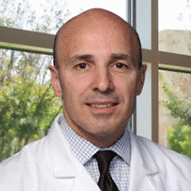




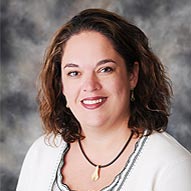



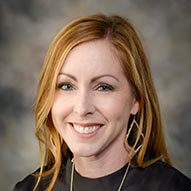





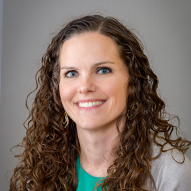
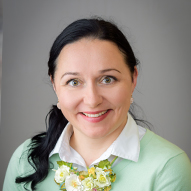

The first time many parents notice retinoblastoma is when they take a picture of their child with a flash and their child’s pupil is white in the photo.
We know about 40% of young children with retinoblastoma will have some genetic predisposition to developing retinoblastoma.
Retinoblastoma is typically diagnosed at an early age, from newborns to 4-year-olds.